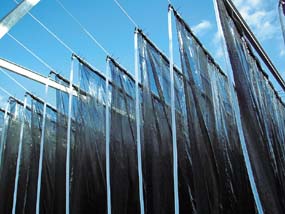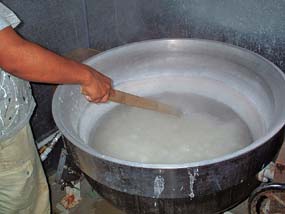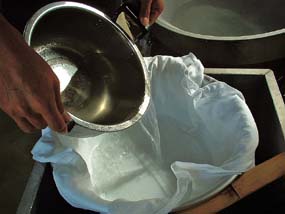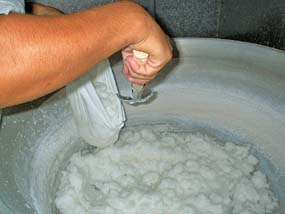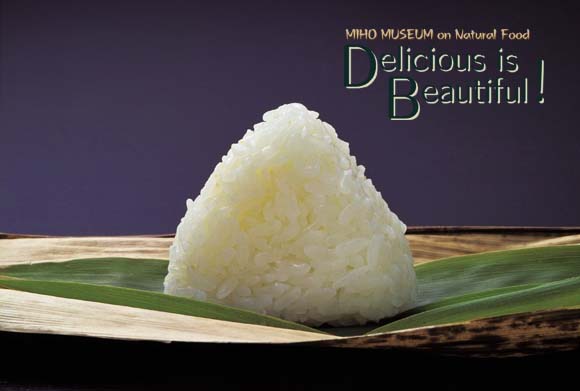
When you open the lid of a large rice cooker, steam fills the air. Your hands and face turn red as you gently press the warm rice ball into shape. The fragrance of the seaweed, sesame seeds, salt, umeboshi plum, tsukudani (vegetables and shellfish cooked in soy sauce), miso, and the local vegetables all make our rice balls the best.
Why are MIHO MUSEUM rice balls naturally the best? This is because everything that goes into them is of the highest quality ingredients that are free of chemical fertilizers, preservatives, and additives. We selected our rice by sampling nearly twenty types of the finest organic rice, which were raised for about ten years without chemical fertilizers, from all over Japan. Our seaweed comes from the same suppliers as a long-established sushi shop in Tokyo. Our homemade, sun-dried, kettle-cooked salt comes from the pristine ocean waters of Miyakojima in Okinawa. Our umeboshi is specially pickled with the finest plums, shiso leaves, and salt. Our miso and soy sauce are also order made from the best soybeans, malted rice, salt, and wheat. And our sesame seeds are selected by hand for uniformity in the process of removing chaff and other debris.
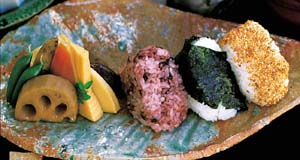 |
| Our rice ball-makers, who use only these natural ingredients, say that they make the rice balls with care and hope that the rice balls can be eaten while still warm. They say everyone should experience every taste―the seaweed, sesame seeds, salt, and vegetables. All the textures and sensations should be savored―the soft and warm rice, the crispy seaweed, crunchy pickles. And all the fragrances should be taken in. Pause a moment, bite into your rice ball, enjoy the harmony of all the flavors. This is why we take pleasure in softly and gently forming every ball of rice. In each bite, we deliver the scent of the ocean and land, the life of the crops, and the hearts of those who nurture the fields and who are involved in the various processes to produce this taste sensation. More than ten years ago, the architect I.M. Pei, assigned with the task of designing MIHO MUSEUM, visited the mountains here. In this untrodden region, where the first narrow path was built, Mr. Pei, after passing mountains and valleys, arrived upon a peak, where he was served rice balls, wrapped in bamboo leaves, for lunch. These rice balls were filled with the hopes and dreams of a future museum, which led to the construction of MIHO MUSEUM. Even today, visitors can enjoy our rice-ball set, onigiri zen, at the Peach Valley Restaurant, which was named after Mr. Pei’s inspiration of creating the Chinese utopia Peach Blossom Spring. Somehow, the plum seed within the rice balls seems to be connected to this visionary quest. |

